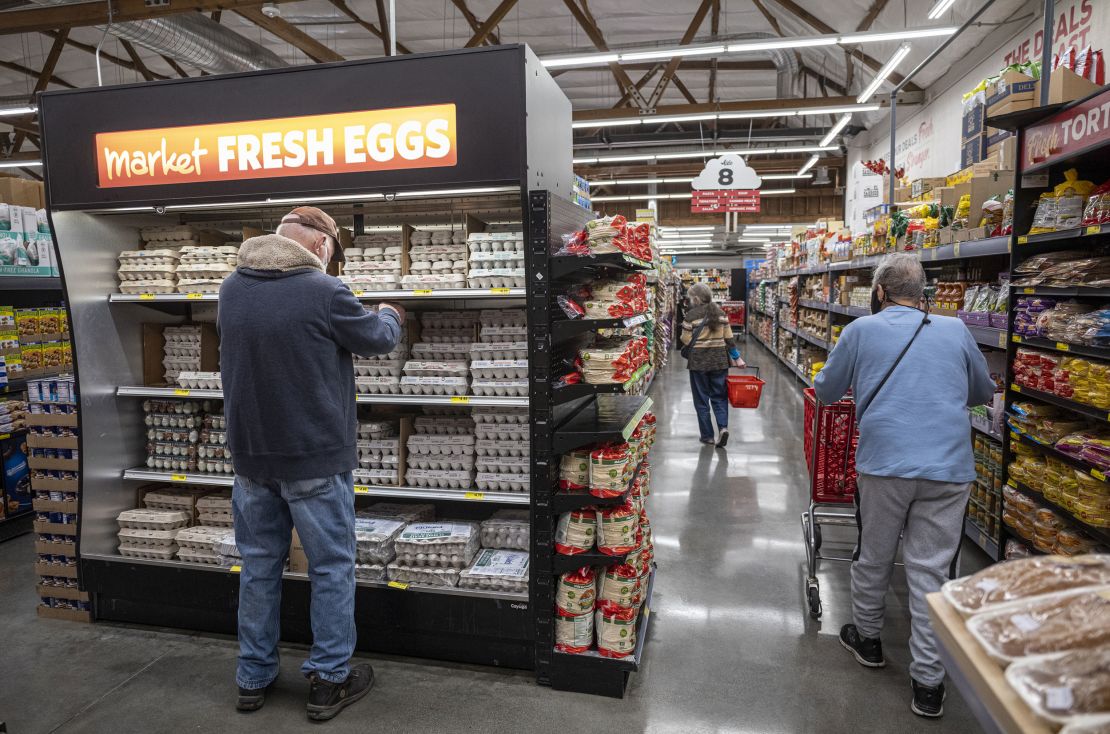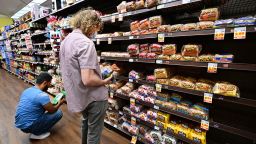Food is still getting more expensive, but at a slower pace than earlier this year.
In the month of October, food was .6% pricier compared to September, adjusting for seasonal swings, according to data released Thursday by the Bureau of Labor Statistics.
For the year through October, without seasonal adjustments, food got 10.9% more expensive, with groceries increasing 12.4% and restaurant prices jumping 8.6%.
The increases are less than the record highs clocked just a few months ago, but food prices are still outpacing the overall rate of inflation, which hit 7.7% for the year.
The Federal Reserve has been attempting to curb inflation by raising interest rates, but that doesn’t do much for grocery and restaurant prices.

When it comes to food, a number of far-flung factors are disrupting supply.
Extreme heat and drought and a deadly avian flu are hurting some crops, as well as squeezing the supply of turkeys and egg-laying hens. Volatility in the grain market caused by the war in Ukraine as well as high energy prices, which impact fertilizer and transportation costs, are also raising food prices.
“Those things are still problematic,” said Tom Bailey, senior analyst of consumer foods with Rabobank.
Issues like these have led to soaring prices throughout the grocery store.
What’s getting more expensive, and what’s getting cheaper
In the year through October, eggs got a whopping 43% more expensive. Butter went up 26.7%, the price of flour went up 24.6%. Lettuce jumped 17.7%, potatoes popped 15.2% and poultry increased 14.9%. Bread, rice and coffee each went up 14.8%.
A handful of items, however, have seen decreases this year, especially in the meat aisle. Uncooked beef steak fell 6.9%, and beef and veal prices dropped 3.6%.
“We’ve seen a little bit of retailer easing of pricing for some of the beef products,” said Bailey. That’s a sign that they are trying to get customers into stores, he noted.
Even as prices cool down, shoppers are still feeling the pain.
“For the consumer, the share of spend of their wallet on food is still well above where we’ve been in the last two decades,” said Bailey.
In October, some prices jumped compared to the previous month.
Eggs saw the highest increase with a 10.1% jump from September. Lunch meats got 3.4% more expensive, lettuce went up 3.3%, tomatoes jumped 2.3% and flour rose 2%.
But several items got less expensive. Fresh fruit fell 2.4%. Uncooked beef roasts and hot dogs both dropped 2.3%, breakfast sausage went down 2% and fresh doughnuts, sweet rolls and coffee cakes fell 1.9%.






















